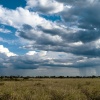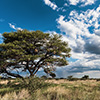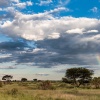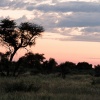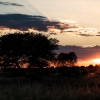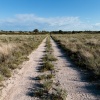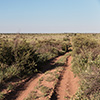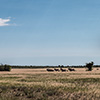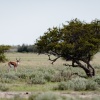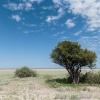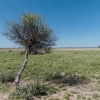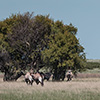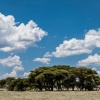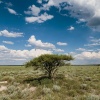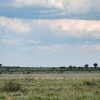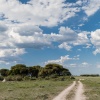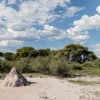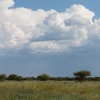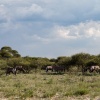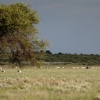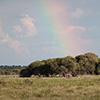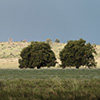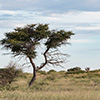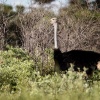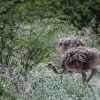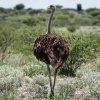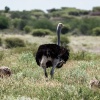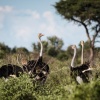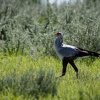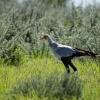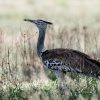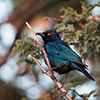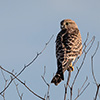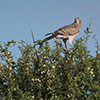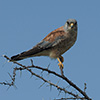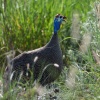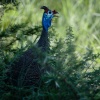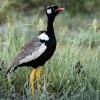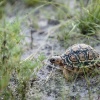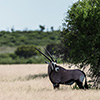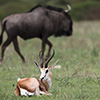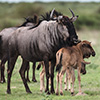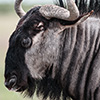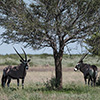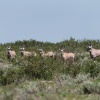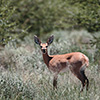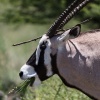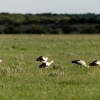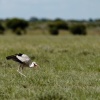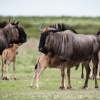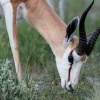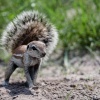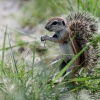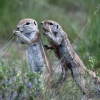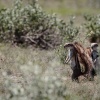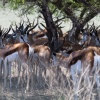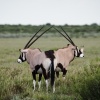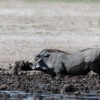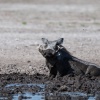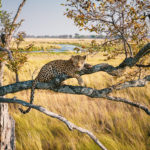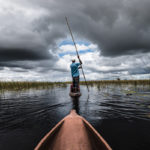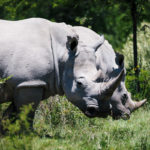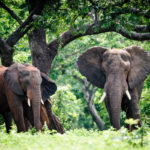A hot Night in Hukuntsi… Stories from Kalahari Desert
Magic Kalahari, a land of contrasts – up in the north, where Okavango River seeps away, it can be as green and lush as it can be red brown and dry in the south. Being spread over several ten thousands of square kilometres it is home to one of the world’s largest game population. Due to game reserves and national parks humans are allowed to scratch at the surface to something that is a worldwide exceptional refuge for flora and fauna, for the smallest as well as for big cats.
CKGR – World’s second largest National Park
Along the way into the Central Kalahari Game Reserve (shortly: CKGR) information condense that you have to make a reservation for your camp ground in advance. Well, it seems to be like that, but I continue my travel as we’re in Africa; and in Africa everything is possible. Most of the people go through the northern route into CKGR, but I come through the south. Having no people means higher chances to get a camp site.
In Botswana’s west I make first experiences with click language. Speaking out the word “Xade” (whereas X stands for a tongue twisting click sound of a village name) becomes a laugher par excellence. Being all of a dither locals stare at me when I ask for the way to that village. “Shit, hopefully I didn’t say something about his mother” crosses my mind. Repeating the words Xade, village and gate somehow makes me getting my directions.
My jeep raises dust like a pro making me leaving a little army of dirt swirling tornados behind. The southern gravel route leading into CKGR reminds me of my cement and limestone dominated childhood in Rüdersdorf. Its open limestone pit is unforgotten, as strolling around and playing there exposed me to sun blazing down everything alive. For hours I am driving dead straight through a scenery that’s an alive definition of flat. While I try to reach the southern campsite before sunset, compact and huge piles of clouds mass together spontaneously to rain down thunderously leaving the one or another rainbow behind.
It was a long day and my roof top tent already calls my name. I fall asleep with the lions roaring in the distance. In the middle of the night I hear something right next to me on the roof of the jeep screaming. It sounds like an alien from the movies or like someone breathing one’s last breath in a Berlin palliative care unit. I get an adrenaline let-down par excellence and am broad awake, instantly. Hyenas, jackals, lions, I know them all, but what the hell is that?! And how did it get on the roof?! The animal keeps on screaming. My loud heartbeat must have chased this something away flying. Phew! It was a bird, or something; a really strange one…
The morning after I saddle my four wheeled horse to stay in the Kalahari for the next three days. Along the way again and again various birds of prey fly up; falcons, hawks and even secretary birds. On the search for snakes, its primary and favourite dish, with its thin legs this very shy bird walks like on stilts through bush and savannah. Its stilt legs are perfect to trample reptiles to death without getting bitten itself. Majestic alike is another bird encounter with the Kori bustard, that, if you come too close, doesn’t hesitate to show being Africa’s largest bird able to fly when escaping from humans getting too close.
When entering one of the small local saltpans the already flat Kalahari landscape becomes even flatter. The flatness makes single exposed standing trees appear like mountains. In and around those saltpans life is bustling though. Hosts of gazelles and antelopes graze or rest in the shadow being provided by sparse bushy vegetation while ostrich families roam around on the search for food picking up everything looking tasty to them. Herds and groups of extremely adaptable Oryx antelopes as well as wildebeest are a feast for the eyes. Latter ones just brought their youngsters into the world. Kalahari boasts with animals and you have to be super careful when driving .
I drive not only through endlessly seeming salt pans and savannah, but also along tremendous stock of wildlife. Literally every 10 metres anew an animal jumps away from the approaching jeep. In particular the small steenboks sidestep away wildly. I can’t believe that the rangers call that game population small, but Leo, a local protector working at CGKR explains me that some 2-3 years ago a huge drought left piles of dead animals behind and since those plant eaters are the basis of existence for carnivores there are not many predators around at the moment. Jeez, how buzzing CGKR must be when the wildlife stock is fully back aboard…
Suddenly a large swarm of birds appear right above me. Their wings provide so much shade that for a short moment temperatures get a little colder. In the backlight of the sun I can’t see them properly but in the moment they land I realise that my fellow European white storks just glided in. I have never seen so much of them. As if they would walk on high-heels they move through the grassland of Deception Pan, munching everything coming across like larger insects and even scorpions. The cherry on this picturesque eye candy cake is a rainbow in the background as a little local thunderstorm decided to unleash its water burden.
Also on the ground life is buzzing like a Berlin techno club. For example many striped ground squirrels are on the watch. You really have to be super careful as they love to cross the jeep’s driving direction. Their head over heels escape run is so wild that it wouldn’t be surprised to hear that some people knocked down some squirrels already. Hidden in the grass another animal escapes when the jeep comes too close, that is the northern black korhaan. Its shredder-like hoot is an alert signal to other animals, and – zap! – they’re all gone… My trip in the central Kalahari was way too quick over, and unfortunately I only heard but not saw big cats, but that shall be different in much drier Kalahari Transfrontier National Park, hence I’ll head on down to southwest.

